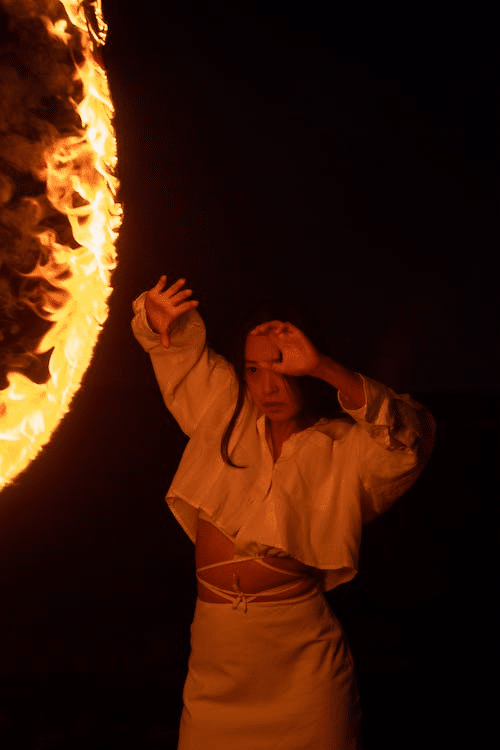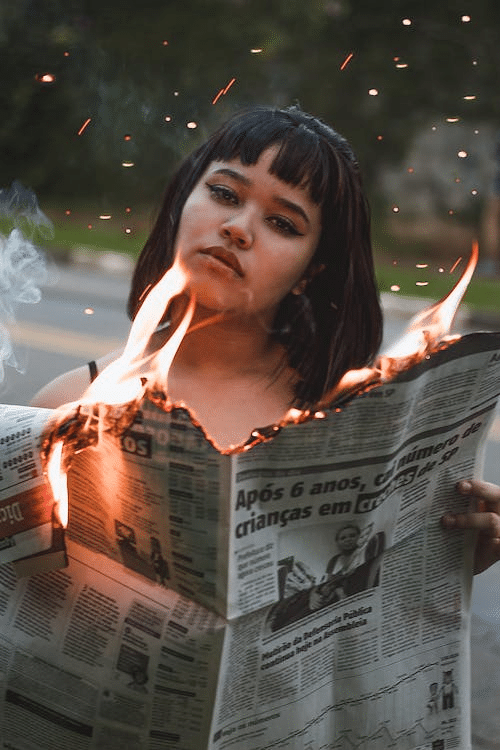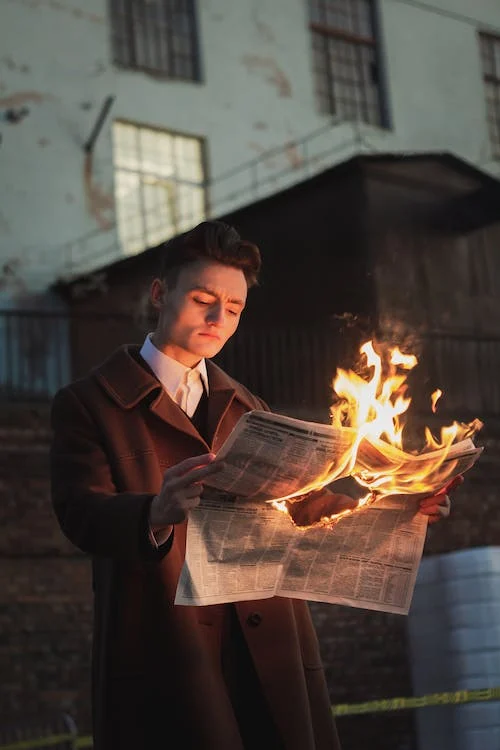Understanding the Symbolism Behind Fire
In the history of humanity, fire has played a significant role both literally and symbolically. Its functions are varied, encompassing everything from the beginning of life and the creative force to annihilation and purification. Throughout history, fire has been worshipped, feared, harnessed, and interpreted in a variety of ways.

Key Takeaways
- Transformation and Growth: Fire symbolizes transformation, often used in rituals to represent spiritual growth.
- Passion and Energy: It represents life’s vigor, emotions, and a driving force in human endeavors.
- Danger and Destruction: Fire’s destructive aspect is a symbol of chaos, war, and mortality.
- Enlightenment and Wisdom: Fire as a symbol of knowledge, enlightenment, and spiritual awakening.
- Duality of Nature: The contrasting roles of fire highlight the dual nature of existence.
Impact of Fire Symbolism on Spiritual Traditions
Fire has played a significant role in religious practices, rituals, and beliefs across cultures. It is a symbol of purity, sacrifice, and the divine in many spiritual traditions.
- Hinduism: In Vedic rituals, fire represents the divine light, and offerings are made to the fire god, Agni.
- Zoroastrianism: Fire symbolizes purity and the presence of the divine in this ancient Persian religion.
- Christianity: Fire has been used as a symbol of the Holy Spirit, purification, and judgment.
- Indigenous Traditions: In various indigenous cultures, fire is seen as a sacred force connecting the earthly and spiritual realms.
Fire as Metaphor and Reality: A Psychological Perspective
The symbolic use of fire in literature, art, and metaphorical expressions often reflects deep-seated psychological connections.
- Metaphors of Desire: Phrases like “burning passion” and “fiery temperament” connect fire with emotions and desires.
- Creative Spark: Fire represents inspiration, creativity, and the “spark” of new ideas.
- Fear and Danger: Fire’s destructive nature symbolizes fear, danger, and uncontrollable forces in the human psyche.
- Transformation and Growth: Fire imagery often denotes change, growth, and the burning away of the old to make way for the new.

Historical Overview of Fire Symbolism
The development of fire symbolism from ancient times to contemporary interpretations can be seen by following its historical development. Fire has always been necessary for survival because it can be used for cooking, heating, and security. As a result, its symbolism is deeply rooted in human consciousness and experience.
- Prehistoric Symbols: Early cave paintings often depict fire, symbolizing life, community, and spiritual beliefs.
- Ancient Civilizations: The Greeks, Romans, and Egyptians had fire deities and used fire in various religious practices.
- Middle Ages: Fire was associated with hell, judgment, and purification in medieval Christian symbolism.
- Modern Interpretations: In contemporary art and literature, fire symbolizes a wide range of concepts from destruction to inspiration.
From Sacred Flames to Modern Imagery: A Symbolic Journey
The way fire is perceived and symbolized has undergone significant transformations over time.
- Sacred Flames: In ancient temples and rituals, fire was seen as divine and untouchable.
- Alchemical Symbolism: In alchemy, fire represents transformation and the refining of the soul.
- Literary Imagery: Authors like Tolkien and Bradbury have used fire as a powerful symbol in their works.
- Contemporary Art: Modern artists use fire to explore themes of destruction, renewal, and human nature.
Dominant vs. Non-Dominant Symbols: The Role of Fire
The symbolism of fire can be interpreted in a variety of ways and in different contexts. It plays a significant and subtle part in mythologies, religious doctrines, and cultural narratives, reflecting both societal values and universal human themes.
- A Universal Symbol: Fire’s universality lies in its connection to fundamental human experiences like warmth, fear, desire, and transformation.
- Cultural Specificity: Different cultures interpret fire in unique ways, reflecting local beliefs, values, and historical contexts.
- Dominant vs. Subtle: Fire’s symbolism can be overt, as in religious rituals, or subtle, as in metaphorical expressions and artistic representations.

The Power Dynamics in Fire Symbolism
The way fire symbols are interpreted can change between cultures, times, and social structures, reflecting underlying power dynamics.
- Social and Political Use: Fire has been used as a symbol of revolt, purification, or cleansing in various political movements.
- Gender Dynamics: Fire symbolism often reflects patriarchal values, but can also be reinterpreted to represent feminine power.
- Cultural Hegemony: Dominant cultures may influence the symbolism of fire, overriding or adapting local or minority interpretations.
Gender and Elemental Roles in Fire Symbolism
The interpretation of fire in different traditions often involves attributing masculine or feminine qualities to it.
- Masculine Fire: In many cultures, fire is seen as aggressive, dominant, and masculine.
- Feminine Fire: Conversely, some traditions view fire as nurturing, creative, and feminine, embodying warmth and vitality.
- Balancing Energies: The masculine and feminine attributes of fire can also symbolize the balance and duality found in nature and human existence.
Fire as Male or Female: A Cultural Examination
The gendering of fire in different mythologies and philosophies reveals a rich and complex cultural landscape.
- Greek Mythology: Fire is often associated with male figures like Prometheus, who stole fire for humanity.
- Celtic Traditions: In some Celtic traditions, fire is seen as feminine, associated with goddesses of the hearth and home.
- Taoism: In Taoist symbolism, fire is part of a balanced interplay of Yin and Yang, representing both male and female energies.

Decoding Fire Symbols: A Psychological Insight
The symbolism of fire can evoke a wide range of emotional and psychological responses. Its multifaceted meanings can offer insights into human nature, desires, fears, and transformations.
- Emotional Resonance: Fire can elicit emotions ranging from passion and love to fear and anger.
- Subconscious Insights: Dream interpretations often see fire as reflecting inner turmoil or desire.
- Therapeutic Use: Engaging with fire symbolism in therapy can help individuals explore emotions, conflicts, and personal growth.
Importance of Context in Fire Symbolism
The interpretation of fire symbols can vary widely depending on the context, culture, and medium.
- Cultural Context: A fire symbol in a Buddhist context may represent enlightenment, while in a revolutionary context, it may symbolize rebellion.
- Artistic Medium: The portrayal of fire in painting, literature, or film can influence its interpretation and emotional impact.
- Personal Experience: Individual experiences and beliefs can shape how fire symbols are perceived and understood.
Fire Imagery and Their Psychological Resonance
The way fire is depicted in art, literature, and media often resonates with deep psychological themes.
- Symbol of Inspiration: Artists like Turner have used fire to depict sublime beauty and inspiration.
- Metaphor for Inner Conflict: Writers such as Faulkner have used fire to symbolize inner turmoil and conflict.
- Exploration of Fear: Films like “Backdraft” explore the fear, fascination, and heroic aspects of fire.

FAQs
What does fire symbolize in different spiritual or cultural traditions?
Fire symbolizes a wide array of concepts depending on the cultural or spiritual context. Common themes include:
- Purity and Sacrifice: In religious rituals and ceremonies.
- Creation and Destruction: As a force that can both give life and take it away.
- Passion and Desire: In art, literature, and everyday metaphorical expressions.
How has the symbolism of fire evolved throughout history?
Fire’s symbolism has changed over time to reflect shifting human beliefs, values, and experiences, from prehistoric cave paintings to contemporary art and literature. From sacred flames to modern symbolic expressions, it has evolved to represent a variety of ideas, including divine presence, rebellion, fear, and inspiration.
Why is fire often associated with transformation or purification?
Fire is a potent symbol for transformation and purification due to its ability to consume and transform substances. It is a symbol of spiritual refinement used in rituals and is a metaphor for personal development and change in language.
What psychological effects can engagement with fire symbols produce?
Engaging with fire symbols can elicit a variety of psychological reactions, such as the arousal of passion, exploration of fears, inspiration for creative work, or contemplation of one’s own spiritual and personal development.
How does the duality of fire as creator and destroyer reflect human nature?
The complexity of human nature is reflected in fire’s dual nature as a creator and a destroyer, which also reflects the potential for growth, creativity, destruction, and renewal. It stands for the many facets and constant change of human existence.
References
Bachelard, Gaston. “The Psychoanalysis of Fire.” Beacon Press, 1964.
Eliade, Mircea. “The Sacred and The Profane: The Nature of Religion.” Harcourt Brace Jovanovich, 1959.
Jung, Carl G. “Man and His Symbols.” Dell, 1968.
Leave a Reply